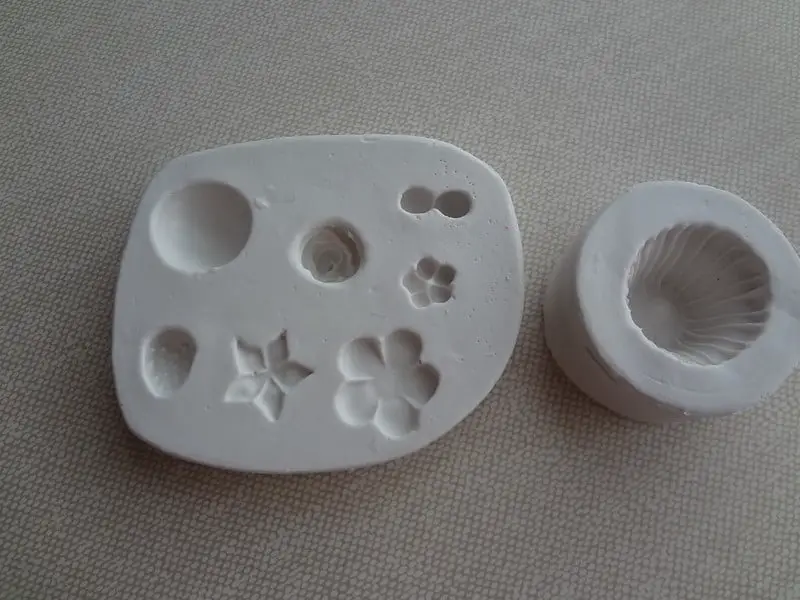Acrylic paint is one of the most versatile types of paint out there, from using it on a canvas, all the way through wood. Since it is a water based type of paint, it can be used on pretty much everything. With a few exceptions of course.
So, can you use acrylic paint on silicone? Yes, you can use acrylic paint on silicone, but you need to properly prep the silicone surface before applying the paint. In this article we go over everything you need to know to successfully use acrylic paint on silicone.
There are many techniques to applying acrylic paint onto silicone, so let’s get to it!
Silicone as a Base for Acrylic Paint

Artists have found that silicone is a very tricky kind of surface to paint on. Because it is a rubber type surface, once you try to paint it, you will notice that the paint isn’t really sticking to it. As with most surfaces, you will need to prime the silicone before applying any sort of paint.
I recommend this Liquitex primer from Amazon. It will prime the silicone base, and then allow the acrylic paint to properly stick to the surface. Without a good primer, the paint will run and not stick at all.
Acrylic paint will clump up, slip off, or not even dry properly when applied to silicone bases without a primer. This is why some artists avoid using silicone as a base for acrylic paint. Always prime your surface, and you will be good to go.
For all my acrylic paint projects, I always use Arteza acrylic paints. They are super versatile and come in tons of different shades and styles. This is a great brand if you are looking for quality paints.
The Difference in Properties
Now that you know silicone bases and acrylic paints don’t typically go great together, here are some facts as to why these properties just won’t work well, unless assisted by a primer.
Acrylic Paints
These water soluble paints are amongst the most versatile paints to use in everyday projects. They contain particles of pigments that are suspended in an acrylic polymer emulsion, which is the binder for the pigment. The mixture then requires a ‘vehicle’ which is normally water that the artist mixes in the paint to use.
Silicone
These bases increase flexibility of the object and are typically better preservatives for paints. Silicone is generally known to be non-stick, with oil paints being amongst the only exceptions, and are also resistant to chemicals. Silicone bases are thus good for the long run if you need durability.
Acrylic Paint Pouring With Silicone

Despite the fact that acrylic paints and silicone bases don’t mix well together, there are many ways of using the two materials together to create something amazing. One way you can easily use acrylic paint on silicone is by doing an acrylic pour.
Acrylic paint pouring has taken the art world into storm, with more people trying out different color combinations to create art. Since it has been established that acrylic paint and silicone are not an effective painting combination, using wet forms of both have helped artists create something stunning.
I highly recommend this Arteza acrylic pouring kit. The colors are simply gorgeous and it’s also very affordable. You don’t need to mix your colors since this set comes pre-mixed and ready for use. This is truly one of my favorite pouring paints out there.

Creating Cells With Silicone
When you add a silicone additive to your pour mix, it will cause a difference in density between the colors, and therefore will create those beautiful cells in your acrylic pour. I recommend this additive for your acrylic paint pouring project.
Using silicone as an additive in acrylic pouring is hotly debated in the artistic community. Many artists choose not to use silicone as an additive in their acrylic pour because it can sometimes reduce the quality of their work.
One of the most common downsides is that it can sometimes have a yellowing effect on paint, which ultimately alters your artwork. If you have a high sensitivity to chemical smells, make sure to wear a mask or face covering, as this will produce strong odors.
However, this also depends on the type and brand of silicone additive that you’re adding to the mix.
How Much Silicone Do I Need to Add to Create Cells?
2-3 drops to each color is usually all you need. However, determining the perfect ratio of silicone to acrylic paint is usually more of a personal preference than an exact science. Experience with the ratio that works best for you!
How to Mix Silicone in Acrylic Pouring Mix
Finding the perfect formula will take some trial and error, but this is a basic starting point:
- 1 part acrylic paint
- 1.5 parts of pouring medium
- 2-3 full droppers of silicone
Tip: Don’t stir the paint if you want larger cells! Stirring will result in broken up cells.
Final Thoughts
Whether you want to paint a silicone phone case, or other silicone surfaces, acrylic paint will most likely not stick to it unless it is properly primed first.
Make sure to follow all the recommended steps in this guide, to ensure you acrylic paint project lasts. Be sure to read my other articles for all your acrylic painting Q & A’s. Happy painting!

